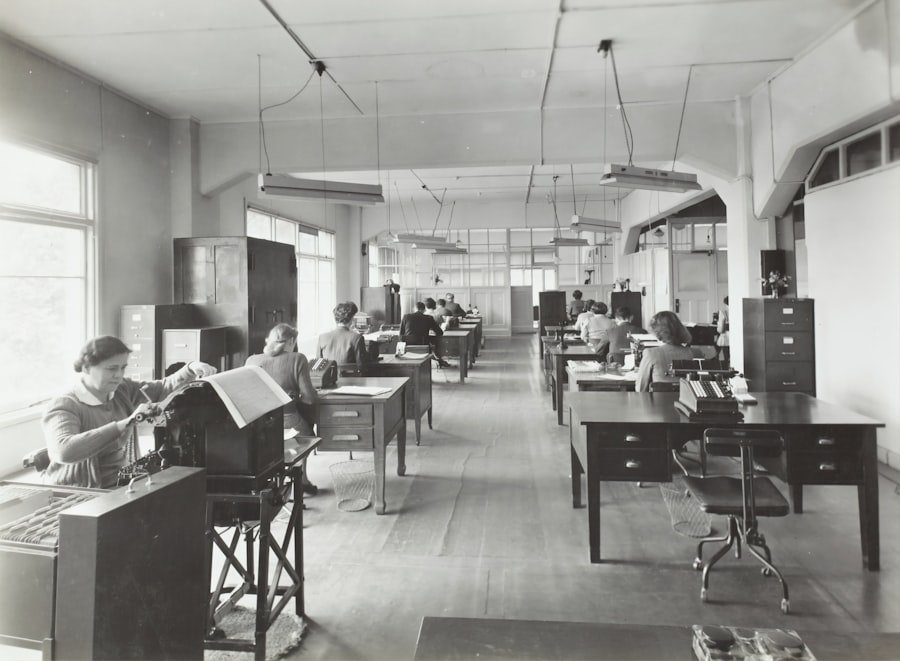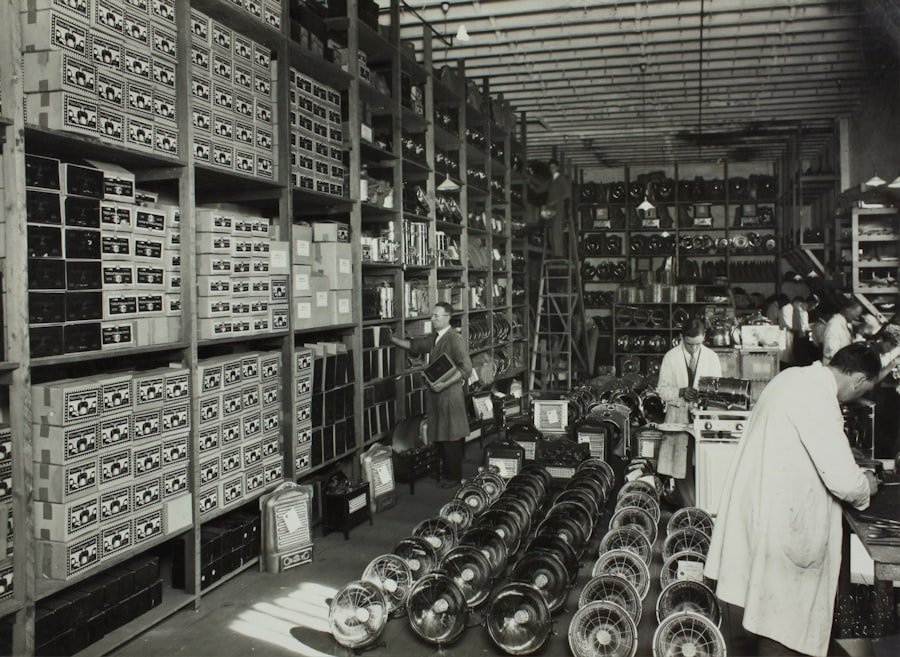The advent of Industry 4.0 has ushered in a new era of manufacturing, characterised by the integration of advanced technologies such as the Internet of Things (IoT), artificial intelligence (AI), and big data analytics. At the forefront of this transformation is the concept of the digital twin, a virtual representation of physical assets, processes, or systems that allows manufacturers to simulate, predict, and optimise performance in real-time. This innovative approach not only enhances operational efficiency but also fosters a deeper understanding of complex manufacturing environments.
As industries strive for greater agility and responsiveness, the digital twin emerges as a pivotal tool in achieving these objectives. Digital twins are not merely theoretical constructs; they are grounded in real-world applications that demonstrate their potential to revolutionise manufacturing practices. By creating a digital counterpart of physical entities, manufacturers can monitor performance, conduct predictive maintenance, and streamline production processes.
This capability is particularly crucial in an era where downtime can lead to significant financial losses and diminished competitiveness. As we delve deeper into the concept of digital twins, it becomes evident that their implications extend far beyond mere simulation; they represent a paradigm shift in how manufacturers approach design, production, and maintenance.
Summary
- Digital Twin is a virtual representation of a physical product or process in the manufacturing industry, allowing for real-time monitoring and analysis.
- The concept of Digital Twin involves creating a digital replica of a physical asset, using data from sensors and other sources to simulate its behaviour and performance.
- Digital Twin in manufacturing has various applications, including predictive maintenance, process optimization, and product design and testing.
- The benefits of using Digital Twin in manufacturing include improved efficiency, reduced downtime, and better decision-making based on real-time data.
- Challenges and limitations of Digital Twin in manufacturing include data security concerns, high implementation costs, and the need for skilled personnel to manage and interpret the data.
The Concept of Digital Twin
At its core, a digital twin is a dynamic digital replica of a physical object or system that is continuously updated with real-time data from its physical counterpart. This concept encompasses not only the physical attributes of the object but also its operational characteristics and behaviours. The digital twin is created through a combination of sensors, data analytics, and machine learning algorithms that gather and interpret data from the physical entity.
This allows for a comprehensive understanding of how the object behaves under various conditions, enabling manufacturers to make informed decisions based on accurate simulations. The digital twin concept can be applied at various levels within manufacturing, from individual components to entire production lines or even entire factories. For instance, a digital twin of a manufacturing machine can provide insights into its operational efficiency, wear and tear, and potential failure points.
By analysing this data, manufacturers can implement predictive maintenance strategies that minimise downtime and extend the lifespan of their equipment. Furthermore, digital twins can facilitate the optimisation of production processes by simulating different scenarios and identifying the most efficient configurations.
Applications of Digital Twin in Manufacturing

The applications of digital twins in manufacturing are vast and varied, spanning multiple sectors and processes. One prominent application is in predictive maintenance, where digital twins enable manufacturers to monitor equipment health in real-time. By analysing data from sensors embedded in machinery, manufacturers can predict when a machine is likely to fail and schedule maintenance accordingly.
This proactive approach not only reduces unplanned downtime but also optimises maintenance schedules, leading to significant cost savings. Another critical application lies in product design and development. Digital twins allow engineers to create virtual prototypes of products before they are physically manufactured.
This capability enables rapid iteration and testing of designs under various conditions without the need for costly physical prototypes. For example, automotive manufacturers can use digital twins to simulate crash tests or performance evaluations, ensuring that vehicles meet safety standards and performance expectations before they hit the production line. This not only accelerates the development process but also enhances product quality and customer satisfaction.
Benefits of Using Digital Twin in Manufacturing
The benefits of implementing digital twin technology in manufacturing are manifold. One of the most significant advantages is enhanced operational efficiency. By providing real-time insights into equipment performance and production processes, digital twins enable manufacturers to identify bottlenecks and inefficiencies quickly.
This data-driven approach allows for continuous improvement initiatives that can lead to increased productivity and reduced operational costs. Moreover, digital twins facilitate better decision-making by providing a comprehensive view of manufacturing operations. With access to accurate data and predictive analytics, managers can make informed choices regarding resource allocation, production scheduling, and inventory management.
This level of insight is particularly valuable in complex manufacturing environments where multiple variables can impact overall performance. Additionally, the ability to simulate different scenarios allows manufacturers to assess the potential impact of changes before implementing them in the real world, thereby minimising risks associated with decision-making.
Challenges and Limitations of Digital Twin in Manufacturing
Despite the numerous advantages associated with digital twin technology, several challenges and limitations must be addressed for successful implementation. One significant hurdle is the integration of disparate data sources. Manufacturing environments often involve a multitude of systems and devices that generate data in various formats.
Ensuring seamless communication between these systems is crucial for creating an accurate and comprehensive digital twin. Without effective data integration strategies, manufacturers may struggle to obtain a holistic view of their operations. Another challenge lies in the complexity of developing and maintaining digital twins.
Creating an accurate digital representation requires significant investment in technology and expertise. Manufacturers must not only invest in advanced sensors and data analytics tools but also cultivate a workforce skilled in interpreting and leveraging this data effectively. Furthermore, as manufacturing processes evolve and new technologies emerge, maintaining the relevance and accuracy of digital twins becomes an ongoing challenge that requires continuous updates and adjustments.
Implementation of Digital Twin in Manufacturing

Implementing digital twin technology within a manufacturing environment involves several key steps that require careful planning and execution. The first step is to define clear objectives for what the digital twin will achieve. This could range from improving equipment reliability to optimising production processes or enhancing product design.
Establishing specific goals helps guide the development process and ensures that resources are allocated effectively. Once objectives are defined, manufacturers must assess their existing infrastructure to identify gaps in data collection and integration capabilities. This may involve upgrading sensors or investing in new data management systems to ensure that accurate real-time data can be captured from physical assets.
Following this assessment, manufacturers can begin developing their digital twins by creating virtual models that accurately reflect their physical counterparts. This process often involves collaboration between cross-functional teams, including engineering, IT, and operations, to ensure that all relevant data is incorporated into the digital twin.
Future Trends in Digital Twin Technology for Manufacturing
As technology continues to advance, several trends are emerging that will shape the future of digital twin technology in manufacturing. One notable trend is the increasing integration of artificial intelligence (AI) and machine learning into digital twin systems. These technologies will enhance the predictive capabilities of digital twins by enabling more sophisticated analyses of historical data patterns.
As AI algorithms become more adept at recognising trends and anomalies, manufacturers will be able to anticipate issues with even greater accuracy. Another trend is the growing emphasis on sustainability within manufacturing processes. Digital twins can play a crucial role in helping manufacturers optimise resource usage and reduce waste by simulating different production scenarios with sustainability metrics in mind.
For instance, companies may use digital twins to evaluate energy consumption across various production methods or assess the environmental impact of different materials before making sourcing decisions. As regulatory pressures increase and consumer demand for sustainable practices rises, leveraging digital twins for sustainability will become increasingly important.
Conclusion and Recommendations for Using Digital Twin in Manufacturing
In light of the transformative potential of digital twin technology within manufacturing, it is essential for organisations to approach its implementation strategically. Manufacturers should begin by conducting thorough assessments of their current capabilities and identifying specific areas where digital twins can deliver value. Engaging stakeholders across various departments will ensure that all perspectives are considered during the development process.
Furthermore, investing in training programmes for employees will be crucial for maximising the benefits of digital twin technology. As the workforce becomes more adept at leveraging data analytics tools and interpreting insights from digital twins, organisations will be better positioned to drive continuous improvement initiatives across their operations. By embracing this innovative technology with a clear vision and commitment to ongoing development, manufacturers can unlock new levels of efficiency, agility, and competitiveness in an increasingly complex landscape.
Digital Twin in Manufacturing is a concept that is revolutionizing the industry, allowing companies to create virtual replicas of physical assets to monitor and analyse their performance. This technology is crucial for improving efficiency and reducing downtime in manufacturing processes. For further insights into the financial implications of implementing such innovative technologies, business owners should familiarise themselves with terms like cash flow, profit margin, and return on investment. A helpful article on this topic can be found at Know Your Business Finance: 5 Business Terms About Finance All Business Owners Should Know.
FAQs
What is a digital twin in manufacturing?
A digital twin in manufacturing is a virtual representation of a physical product, process, or system. It uses real-time data and simulation to mirror the physical counterpart, allowing for analysis, monitoring, and optimization.
How is a digital twin used in manufacturing?
Digital twins are used in manufacturing to improve product design, monitor equipment performance, predict maintenance needs, and optimize production processes. They can also be used for virtual testing and prototyping.
What are the benefits of using digital twins in manufacturing?
The benefits of using digital twins in manufacturing include improved product quality, reduced downtime, increased efficiency, predictive maintenance, and the ability to simulate and test different scenarios without impacting the physical system.
What technologies are used to create digital twins in manufacturing?
Technologies used to create digital twins in manufacturing include IoT sensors, data analytics, cloud computing, artificial intelligence, and simulation software. These technologies enable the collection, analysis, and visualization of real-time data.
Are digital twins widely used in the manufacturing industry?
Yes, digital twins are increasingly being adopted in the manufacturing industry, particularly in sectors such as aerospace, automotive, and industrial machinery. They are seen as a key enabler for Industry 4.0 and smart manufacturing initiatives.
